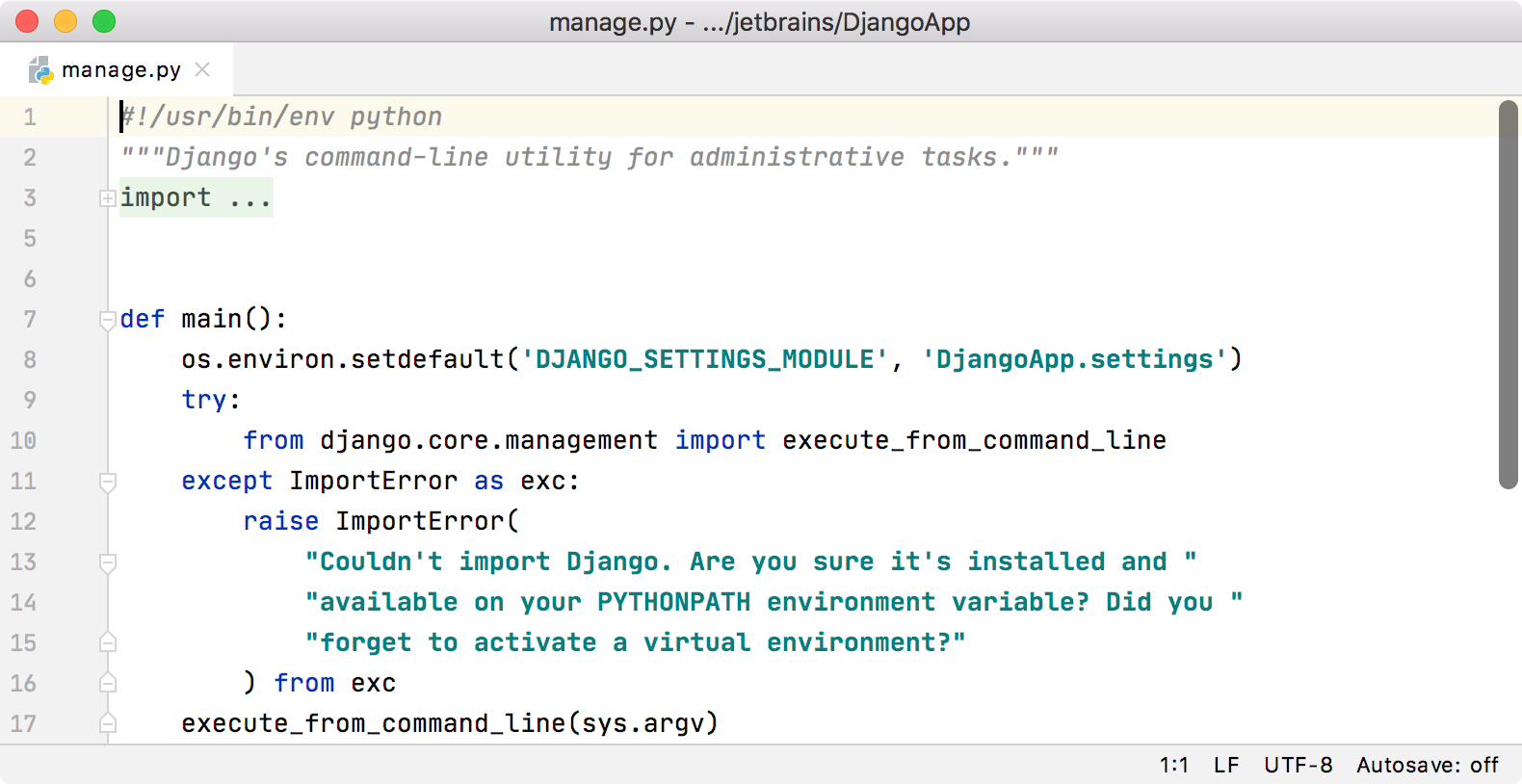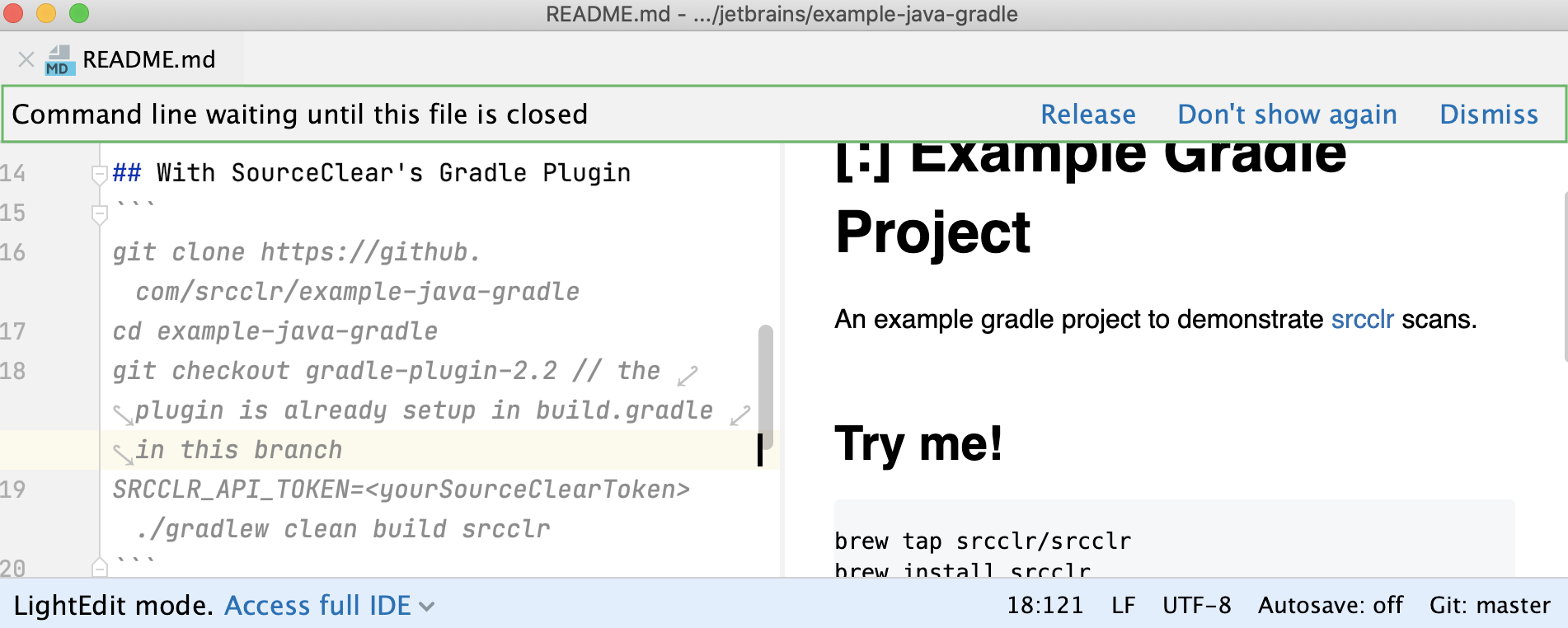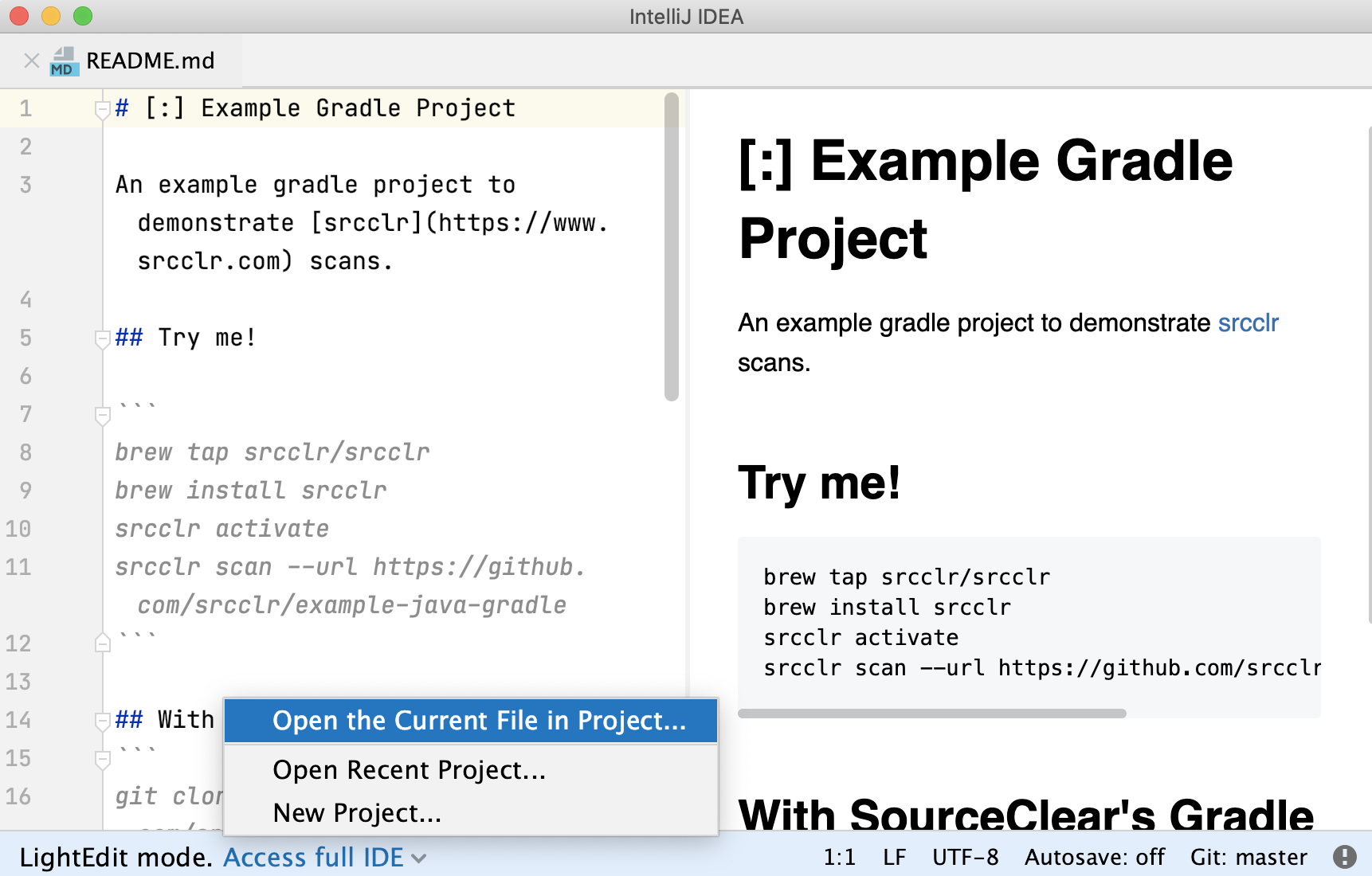LightEdit mode
When you need to edit just one file without creating or loading the whole project in PyCharm, you can use the LightEdit mode.
Keep in mind that the LightEdit mode works as a text-like editor, and it doesn't support the usual IDE editor features such as code completion, or code navigation. However, you can navigate to a specific line of code (), fold or unfold parts of code, check, and change file encoding.

You can use several ways to open a file in the LightEdit mode.
Locate the file you need in your file system, right click it and select Open With.
Select the version of PyCharm with which you want to open a file and click Open.
If you don't have the PyCharm launcher configured, you need to configure it before you can open a file.
Depending on your OS, open the file as you usually do when in command line adding the
-ecommand before the filename.In Terminal, from the folder where your file is located, execute the following command:
pycharm file.txtpycharmis the PyCharm launcher name,file.txt— your filename.
note
When you open a file that doesn't belong to any project with the
pycharmcommand or from the local file system, PyCharm displays a dialog where you can choose whether to stay in the LightEdit mode or open the file in a project.
You can open a non-project file in the already opened project.
If you don't have the PyCharm launcher configured, you need to configure it before you can open a file.
Depending on your OS, open the file adding the
-ecommand before the name of your file.For example, for macOS the syntax would look as follows:
pycharm -e myfile.txt
You can interrupt a process in the command line and put terminal on hold until you're done editing a file in the LightEdit mode. For example, when you work in the command line and run a commit process to Git, you can pause the terminal and use a text editor in the LightEdit mode to quickly write a commit message.
note
If you have a Toolbox installation of PyCharm, ensure that you have installed PyCharm from the Toolbox 1.9 version. If you have a stand-alone installation of PyCharm, create a command-line launcher (Tools | Create Command-line Launcher) first.
Depending on your OS, open the file adding the
-eand-wcommands before the name of your file.For example, for macOS the syntax would look as follows:
WindowsmacOSLinuxpycharm.bat -e -w myfile.txtYou can find the executable for running PyCharm in the installation directory under bin. To use this executable as the command-line launcher, add it to your system
PATHas described in Command-line interface.pycharm -e -w myfile.txtBy default, PyCharm does not provide a command-line launcher. For more information about creating a launcher script for PyCharm, refer to Command-line interface.
pycharm.sh -e -w myfile.txtYou can find the script for running PyCharm in the installation directory under bin. To use this script as the command-line launcher, add it to your system
PATHas described in Command-line interface.PyCharm opens the file in the LightEdit mode, and displays a notification indicating that the command line is waiting for the opened file to close.

Click one of the notification's options or close the file to release the command line.
Even though the LightEdit mode doesn't support all of the PyCharm editor coding assistance, you can still use basic editing features and basic menu options.
Use the main menu to open recent files, show the line numbers, whitespaces, extend the code selection, and so on.
When you edit a file, the blue color indication on the tab shows that the file content was changed.
When external changes are made to the file you are working on, you can update it by selecting File | Reload from Disk from the main menu.
Use the context menu for pasting or folding your code as well as switching to column selection mode.
Use the status bar to go to the line you need, check the VCS, or toggle the Autosave mode.
Click Autosave: off on the Status bar and select the Save changes automatically in the popup that opens.
You can quit the LightEdit mode and switch from editing a single file to working on the entire project. To do so, use one of the following ways:
